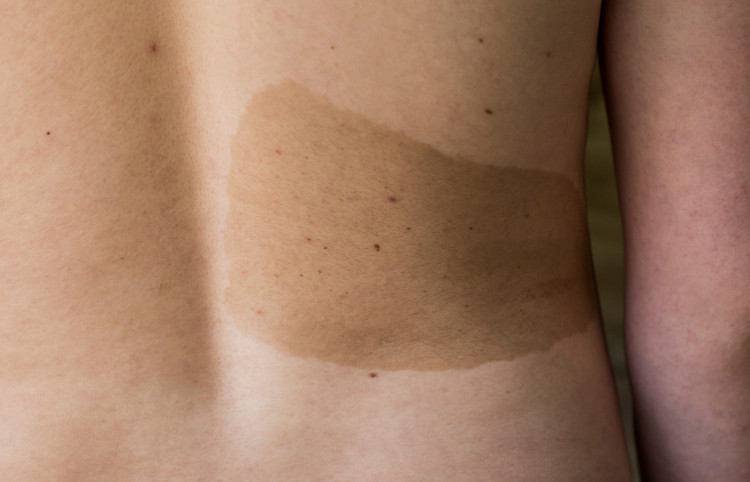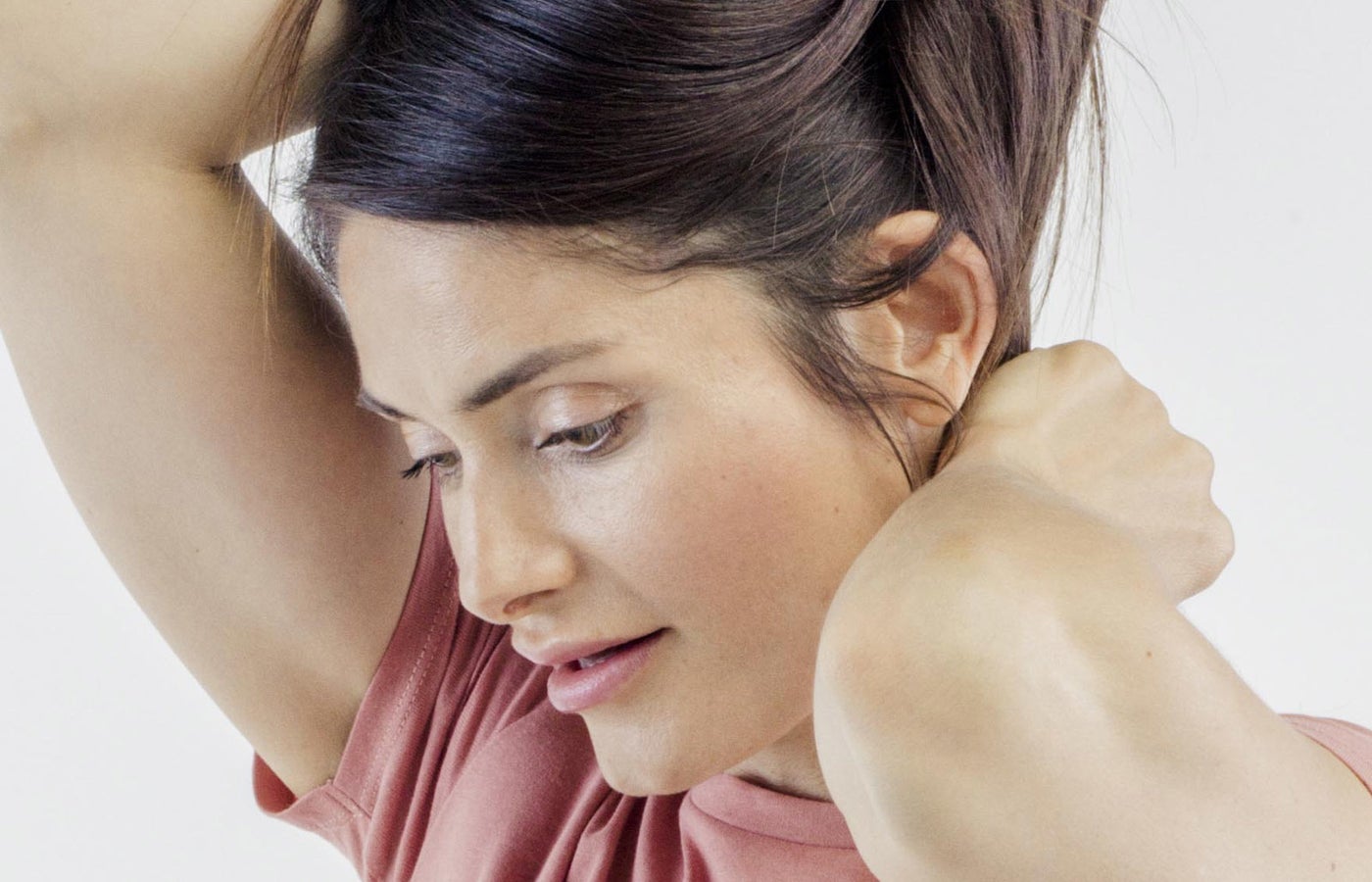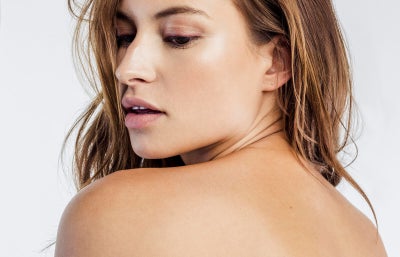Birthmarks
Babies can be born with discoloration anywhere on their face or body. It’s impossible to prevent birthmarks, but that doesn’t mean they have to be permanent. Learn why they happen and how you can remove them.
Babies can be born with discoloration anywhere on their face or body. It’s impossible to prevent birthmarks, but that doesn’t mean they have to be permanent. Learn why they happen and how you can remove them.
Types of birthmarks
Top treatments
Other options to consider
A birthmark is a usually benign mark, spot, or irregularity on the surface of the skin that’s present from birth or appears soon after. While these marks can fade as you grow up, they’re frequently permanent. There’s no way to prevent them.
They’re typically vascular (the result of abnormal blood vessels); pigmented (caused by an overgrowth of melanocytes, the pigment cells that produce color in our skin;, fibroblasts; or keratinocytes (created from excess keratin, the protein that makes up skin).
Birthmarks can be hereditary, and you may even be able to see similarities among family members. However, most are unique to each person.
Some can be a nuisance—for example, a mole can get caught in a zipper, or raised marks can rub against clothing and cause irritation. Depending on its size and the area of the body where it’s located, a birthmark may be disfiguring or be a cause for feelings of insecurity. You may wish to have it removed for cosmetic reasons.
Keep in mind that you may need more than one visit to your dermatologist or physician in order to fade or remove a birthmark—and some aren’t removable.
There are two main types of birthmarks: vascular, which are the result of abnormal blood vessels, and pigmented, which result from pigmentation inconsistencies.
Vascular birthmarks
- Hemangiomas (strawberry marks) are benign tumors made up of blood vessels. They can occur in muscle, bone, and internal organs, but they’re classified as a birthmark when they appear on the skin’s surface. Hemangiomas have a textured look and can vary in size and shape. Often, they're not present at birth but appear soon afterward. They can grow rapidly, even covering the eyes or mouth, making it difficult for infants and children to see, breathe, or eat. These types of strawberry hemangiomas need to be removed.
- Macular stains (salmon patches, stork bites, or angel kisses) are clusters of blood vessels that have become stretched or dilated, resulting in a flat red mark on the skin. They’re more visible during temperature changes or when your baby is crying. This is called a stork bite when found on the back of the neck and an angel’s kiss if located between the eyes. It usually fades on its own within a few months.
- Port-wine stains (nevi flammei), patches or spots of color ranging from pink to maroon, are caused by dilated capillaries that allow blood to collect in a specific area. They can be on the face, neck, hands, and chest; some people have them on the abdomen, legs, and arms. Port-wine stains gradually become darker over time. While they start out smooth or flat, some people experience textural changes as they grow up—the mark may start to feel rough or pebbly. The skin of a port-wine stain can be more sensitive if it’s scratched or cut. “A port-wine stain is present at birth and grows proportionally with the child. It typically does not go away with time, so there is more of an indication to treat these,” explains Dr. Hamilton. Two rare genetic conditions that aren’t inherited can cause port-wine stains: Klippel-Trenaunay syndrome (KTS) or Sturge-Weber syndrome.
Pigmented birthmarks
- Congenital dermal melanocytosis is sometimes referred to as Mongolian spots (a term coined by an anthropologist who thought they were more prevalent in people from Mongolia). These congenital, benign blue-gray patches look similar to bruises. They most often appear on the buttocks and lower back but may sometimes crop up on the abdomen or trunk and arms. The pigmentation can darken and become intense throughout the first year, peaking at age 2 and resolving itself over the years. It’s usually completely faded by adulthood.
- Café au lait macules (CALMs) (from the French term for “coffee with milk”) are named for their light-tan color. Usually circular or oval, they’re often not present at birth but develop in the first few years of life. CALMs are usually harmless, but if they appear in a cluster larger than the size of a quarter, this may be a sign of neurofibromatosis type 1 (aka von Recklinghausen disease), a genetic disorder that causes abnormal cell growth of nerve tissues and affects the skin, nerves, and eyes.
- Congenital melanocytic nevus, or nevi moles, are present at birth in 1–2% of the population. Occurring anywhere on the face or body, they can be pink, light brown, dark brown, or black; small or large; flat or raised. They’re caused by a genetic mutation that develops randomly in utero, but they’re not inheritable. While congenital nevi are typically benign, they should be monitored for skin cancer later on in life. The larger the mole, the higher the risk for melanoma, a rare but serious form of skin cancer.
Most birthmarks are harmless, but in rare cases, they can indicate underlying health issues. Many dermatologists recommend getting them checked, to ensure there isn't an underlying disorder, like neurofibromatosis type 1 (NF1) or melanoma, the most deadly form of skin cancer. If your birthmark bleeds, see your physician right away.
If your child has a birthmark, point it out to your pediatrician, to verify it isn’t something serious. Throughout their childhood, monitor your child’s mark for changes in size, texture, or color, especially if those changes occur rapidly. Any mark or mole with irregular borders should be examined.
Removal treatments include lasers, medications, and in-office treatments. These are the options that doctors and RealSelf members say deliver the best results.
- Pulsed dye laser (PDL) is an FDA-cleared laser that can treat red-colored vascular birthmarks, like port-wine stains, or red moles (called cherry angiomas). It uses a concentrated beam of light that selectively damages red pigment from abnormal blood vessels, without harming the surrounding normal skin. “Vbeam is the most advanced pulsed dye laser technology. It treats red skin, broken blood vessels, rosacea, and birthmarks,” says Dr. Dennis Gross, a dermatologist in New York City. “This laser targets the selected area with an intense yet gentle burst of light. It’s so safe that it’s used for the treatment of port-wine stains on infants and young children.” PDL treatments are quick (approximately 30 minutes) in-office procedures, with little to no downtime. You’ll need three to five monthly sessions, to fully fade marks and redness. Find a doctor who offers pulsed dye laser treatments
- Nd:YAG lasers can treat vascular lesions or birthmarks. They may work well for café au lait marks, but removal isn’t guaranteed. “CALMS, or café au lait macules, are notoriously difficult to predict—50–60% respond to lasers,” says Dr. Davin Lim, a dermatologist in Brisbane, Australia. “Of those that respond, a third to half will recur over time but can be retreated.” Recent studies indicate that the Nd:YAG and PicoSure lasers may work well for a café au lait mark. However, there still may not be successful removal if the border of the birthmark is smooth. “CALMs with jagged or ill-defined borders of the ‘coast of Maine’ subtype tend to respond well to laser treatment, whereas those with smooth and well-defined borders of the ‘coast of California’ subtype tend to have poor response.” Laser treatments can be painful, so your doctor should start by applying a numbing cream and possibly giving you additional pain medication (an over-the-counter med or a prescription option like Valium). Once your face is numb, your doctor will apply a water-based gel, to protect the skin, before gliding the laser across the mark. The procedure can take anywhere from 15 minutes to an hour, depending on the size. If your birthmark isn’t gone after the first treatment, you may need a couple of additional sessions (after your skin has healed) in order to get rid of it completely. Find a doctor who offers Nd:Yag
- Mole removal is an in-office procedure to get rid of most marks. Benign, congenital moles can be removed by punch, shave, or surgical excision. Your doctor will first measure, map, and photograph the area before attempting removal. If your mole is cancerous, you may have a different procedure, called Mohs surgery, to cleanly excise all cancerous tissue. Punch excision most often removes flat moles with a sharp cylindrical device by “punching out” the mole tissue. Shave excision works best for raised moles, and your doctor will use a scalpel or razor to level the mole. There is a chance for the mole to return in a few years. Surgical excision is often done if a mole is dark or bumpy. Your doctor will simply cut out the mole and borders surrounding it before closing the area with tiny sutures. Surgical excision can leave a scar, but it will fade over time. Mole removal can take anywhere from just a few minutes to an hour, depending on the size of the mole and the removal technique. The method of removal generally depends on the purpose of the surgery, the color and size of the mole, whether it’s raised or flat, and where it’s located. Find a doctor who offers mole removal
- Cryotherapy is also an option for raised or textured marks, which can be frozen off with liquid nitrogen.
- Beta-blockers (specifically, propranolol) are FDA-approved for the treatment of infantile hemangiomas. They deprive a hemangioma of blood, so the mark stops growing and the cells “die.”
- Corticosteroids or glucocorticoids can be injected into a birthmark or administered orally in order to shrink it, but steroids have fallen out of favor as doctors opt for more advanced treatments, like beta-blockers and laser therapy.
If you’re not looking for removal solutions, you can try full coverage makeup, like Dermablend Birthmark Cover Up or Smart Cover Concealing Cream.
You can also tattoo over a birthmark if it’s smooth, something that one RealSelf member with a café au lait mark inquired about.
“Birthmarks are caused by increased pigmentation of the skin, so there are no contraindications for the café au lait spots to be covered with a tattoo,” says Dr. Kian Karimi, a plastic surgeon in Los Angeles. “I would recommend that you discuss any allergies or skin conditions with a certified tattoo artist, to ensure body compatibility with their ink. While healing, make sure to take proper care of the tattoo, to avoid infection.”
Updated July 6, 2021




